| [Cultural Crossdressing: Art on the Ruins of Socialism and on the Pinnacles of Nationalism] Kulturní převlékání. Umění na troskách socialismu a na vrcholcích nacionalismu, Galerie moderního umění v Hradci Králové, 2024 [in Czech] | |
| [Imaginary Transgression: Contemporary Art and Critical Theories on the Eastern Part of Europe] Határsértő képzelet – Kortárs művészet és kritikai elmélet Európa keleti felén. Budapest: MTA Bölcsészettudományi Kutatóközpont, 2023 [in Hungarian] | |
| [Cultural Cross-dressing. Art on the ruins of Socialism] Kulturális átöltözés. Művészet a szocializmus romjain. Budapest: Argumentum, 2009 [in Hungarian] | |
| [Dancing the Tight Rope. Essays on Contemporary American Art] Kötéltánc. Tanulmányok az ezredvég amerikai képzőművészetéről. Budapest: Új Művészet Publishing House, 2001 [in Hungarian] https://ujmuveszet.hu/termek/andras-edit-koteltanc/ | |
| Schönberger, Armand. 1885–1974 Budapest: Corvina Publishing House, 1984 [in Hungarian] |
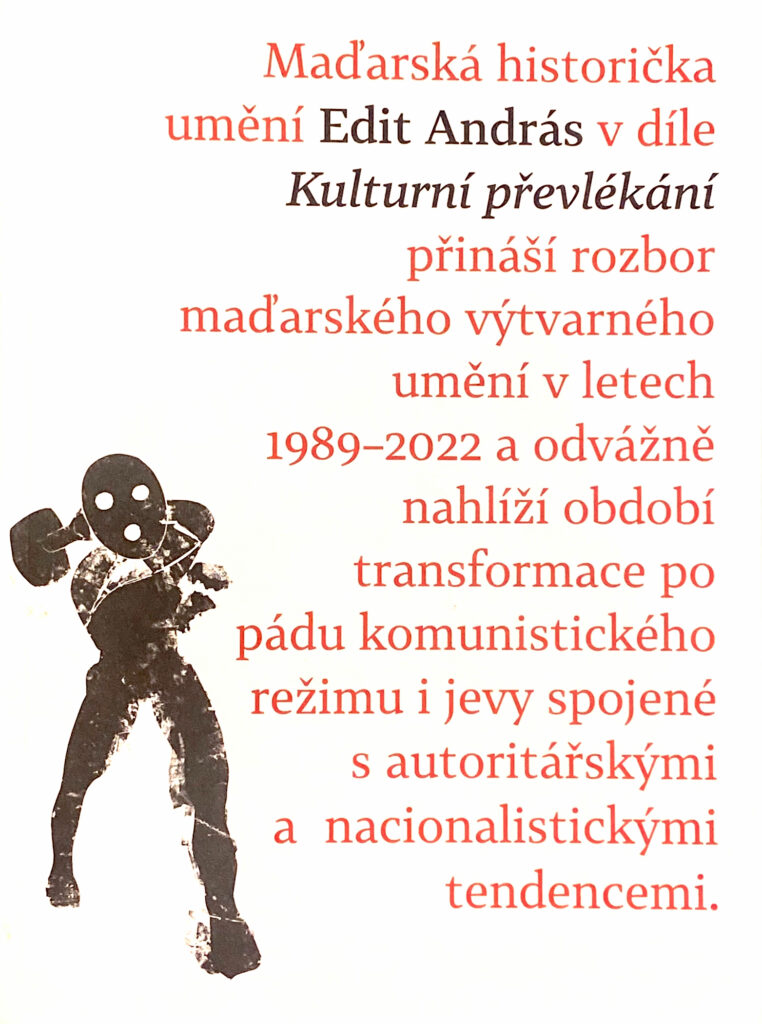
[Cultural Crossdressing: Art on the Ruins of Socialism and on the Pinnacles of Nationalism] Kulturní převlékání. Umění na troskách socialismu a na vrcholcích nacionalismu, Galerie moderního umění v Hradci Králové, 2024 [in Czech]
This book, titled Kulturni prevlékáni. Umèni na troskách socialismu a na vrcholcich nacionalismu (Cultural Crossdressing. Art on the Ruins of Socialism and on the Pinnacles of Nationalism), is a Czech translation of selected parts from two related books by Hungarian art historian and theorist Edit András. The first of the two, Kulturális átöltözés. Múvészet a szocializmus romjain (Cultural Crossdressing.Art on the Ruins of Socialism, 2009), looked at the Hungarian art scene, artistic trends, and artists during the transformation era (1989–2010). Selected parts of this book form our new publication’s first section, titled “I. Art on the Ruins of Socialism” (I. Umèni na troskách socialismu). The second book, Határsértő képzelet. Kortárs művészet és kritikai elmélet Európa keleti felén (Imaginary Transgression. Contemporary Art and Critical Theory in Eastern Europe, 2023) – sections of which make up the second part of our publication, “II. Art on the Pinnacles of Nationalism” (I. Umèni na vrcholcich nacionalismu) – explored the period after 2010 and built on the ideas developed in the first book, which chronologically ended at the time of rising nationalist tendencies in Hungary…
The publisher of this Czech translation, the Gallery of Modern Art in Hradec Králové, has chosen to include in its edition mainly those passages that describe the Hungarian art scene and the works being made by Hungarian artists. Nevertheless, great care was put into the selection of these passages, which author Edit András made with a view to providing at least a partial theoretical framework, necessitated among other things by the fact that her approach to thinking and writing about Hungarian (but not just Hungarian) culture and art is founded on critical theories for writing on contemporary art. Her intention was not to present a comprehensive overview of art, but instead to focus on those areas that she considered crucial, valid, and relevant from a present-day perspective. In her analysis and study of art, she uses the methods of critical art history writing.
The first part of our book, “I. Art on the Ruins of Socialism”, looks at the Hungarian art scene in the 20 years after the fall of state socialism. Its central theme is the transformation of art-making practices, theory, and artistic positions. The artists mentioned in the text actively contributed to the production of new knowledge and new concepts, explored the events and processes that were a part of these changes, enabled the free flow of previously repressed emotions, and in some cases revealed hidden contradictions.
Excerpt from summary (Written by Jan Zálešák, translation: Stephan von Pohl)
(Continue reading about this book)
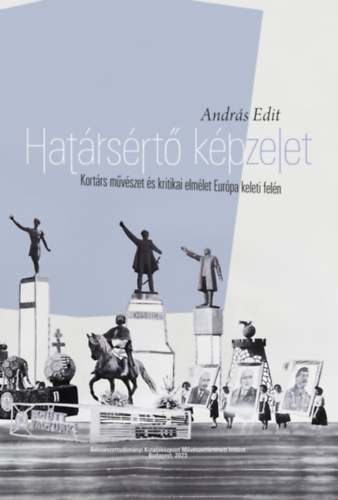
Imaginary transgression: Contemporary Art and Critical Theories on the Eastern Part of Europe (Határsértő képzelet – Kortárs művészet és kritikai elmélet Európa keleti felén.) Budapest: MTA Bölcsészettudományi Kutatóközpont, 2023 [in Hungarian]
If I had to say in a nutshell what kind of book Edit András has written, the first thing that would come to mind is: outspoken. The second would be: unorthodox. Wherever you look, you will not find any ambiguity, evasion, or vague allusions. The text is argumentative and critical, taking the reader from the euphoric and unexpectedly bitter decade after the change of regime-when “a world collapsed” and the new one was far from its best-through the unending global political, economic, and mental crisis of the 2000s-to our current oppressive life, plagued by pandemics and war nearby.
What has happened and is happening to us – and, of course, to art and artists in particular – needs to be understood, and an art historian today must contribute to this process of comprehension. In her analyses and investigations, Edit applies the methods of critical art history and contemporary historical theory; she criticizes and argues with her colleagues with due respect, but also with courage. A productive tension runs through all the chapters.
Excerpt from the Introduction of the book (Gábor Andrási, editor)
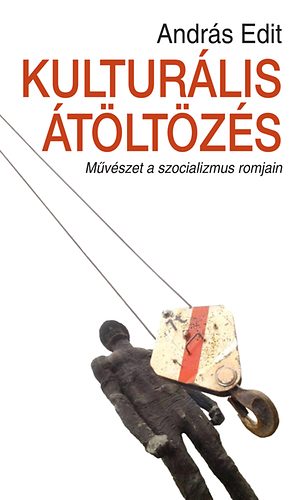
Cultural cross-dressing. Art on the ruins of Socialism; (Kulturális átöltözés. Művészet a szocializmus romjain.) Budapest: Argumentum, 2009 [in Hungarian]
Edit András is an art historian and art critic, as well as a Senior Research Fellow at the Institute of Art History of the Hungarian Academy of Sciences. She has had the opportunity to contribute to numerous contemporary art studies and reviews in Hungarian and foreign journals, catalogues, and volumes of studies. Her contributions to the field of contemporary art and theory in the post-socialist region, with a particular focus on the transition period, have been translated into a number of languages. In 2008, he was honored with the Art Criticism Prize of the Hungarian chapter of the International Association of Art Critics (AICA) for his work on The Collective Memory and Trauma of the Socialist Past, which was published in English and in Hungarian in this volume. “It is not an easy task to take stock of the period since the regime change and of recent artistic developments in Hungary and Eastern Europe. There is no reassuring historical perspective that gives structure to events and puts different phenomena into context, which makes this a challenging undertaking.” It is important to note that the individuals in question are often among us, and as a result, the complex web of personal sensitivities requires a high level of care and sensitivity. It would be remiss of me not to suggest that there is no more interesting task in art history than to venture forward and, entering a field untraversed by others, to set to work with an openness to new ideas and new insights, and a sensitivity to uncharted values. In recent years, Edit András has devoted her theoretical and critical attention to post-socialist art from the disintegrating Eastern Bloc. Her writings offer a history of change, exploring the various aspects of this phenomenon.
Excerpt from the Introduction of the book (Gábor Andrási, editor of the book)
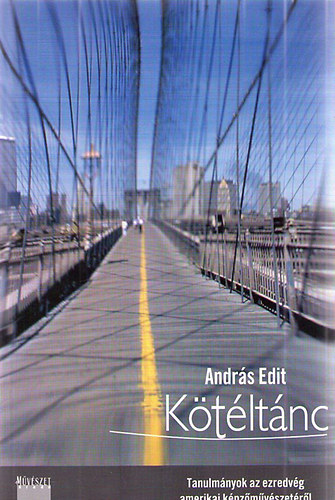
Dancing the Tight Rope. Essays on Contemporary American Art; (Kötéltánc. Tanulmányok az ezredvég amerikai képzőművészetéről) Budapest: Új Művészet Publishing House, 2001 [in Hungarian]
Edit András spent about half of the nineties in New York, from where she regularly sent back her art reviews and criticism. During her time in Hungary, she was engaged in the local adaptation of the latest trends and ideas in contemporary art, scanning and stimulating phenomena that had the same origin but showed local differences. Meanwhile, in Europe, he continued his critical work on contemporary American art by reviewing major international American exhibitions (Berlin, London, Venice). Although the title was about András Böröcz, commuting between Budapest and New York, and written in connection with one of his exhibitions, it also fits perfectly into her own position as an art critic; it could even be considered his implicit critical ars poetics, and as such is an excellent introduction to a collected edition of her art criticism: “It is a vital, strange adventure to wander from one culture to another. One extreme pole of integration is to become an island, an island, to remain outside. In this case, the price of protection, of enclosure, is isolation, one-way communication. At the other extreme is the identification that demands too much of everything and everyone, the unconditional interiorization of new values, from which communication is again one-way because there is nothing to appeal to from here. But it is a torturous and beautiful thing to be in between, to mediate from one world to another. The delicate balance required for this can only be maintained for a time or two, so strong is the force working against it: the attraction of the old and the lure of the new. In the meantime, there is the hovering, the incessant tightrope walks over the narrow but deep abyss, where you have to watch with every nerve, eyes wide open, breathless, not to drift off or grab hold too soon. If you do, there’s no turning back, you’re in a state of suspended animation. A writer must work and define his position constantly; an artist must work constantly, as if his days were numbered; and on the tightrope, they are indeed numbered. Perhaps I do not emphasize enough that this is New York. It is a city whose intensity is almost unbearable, whose condensed existence is shocking, and where time seems to have accelerated and space concentrated. You can’t help but think about it, it’s so challenging.”
(Excepts from the Introduction of the book)
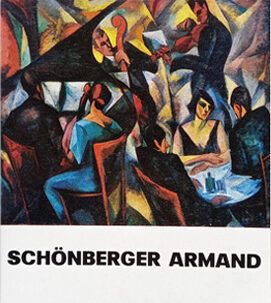
Schönberger, Armand. 1885-1974 Budapest: Corvina Publishing House, 1984 [in Hungarian]
Armand Schönberger belongs to the second generation of the Hungarian avant-garde. He is one of those artists who have been undeservedly neglected by Hungarian art historians. In the 1910s, in the context of the activist movement, he created works with a constructive spirit and deep human meaning. His most important period was the 1920s and 1930s, when his graphic and painterly work was completed, moving from Expressionism to Cubism and partly to Futurism.
For the first time, Edit András has undertaken the basic research necessary to present a complete career and the painter’s oeuvre, illustrated with 7 color and 52 black-and-white reproductions.